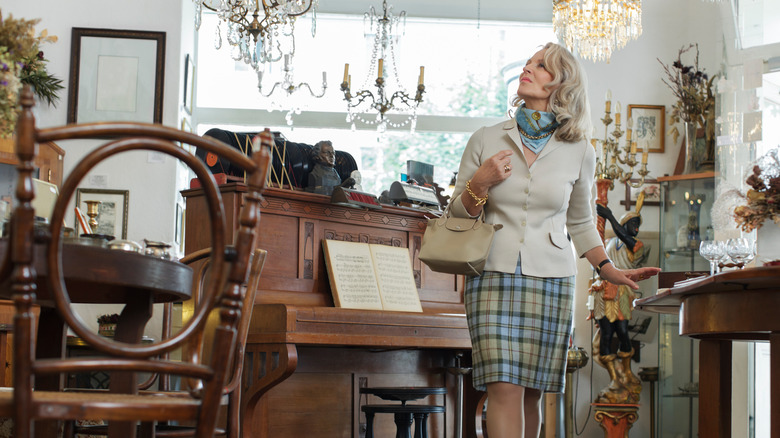The Items That HGTV's Erin Napier Says You Should Buy Antique And Not New
Resale, in general, has had a massive boom in the last decade, though furniture and home furnishings outpace all the other categories. According to the Chairish 2022 Resale Report, 82% of the people surveyed from the United States indicated that they purchased second-hand or thrift furnishing in the last 12 months. The report also notes that nearly 100% of those surveyed said that resale shopping is no longer taboo.
That's good news for folks like HGTV's Erin Napier, who swear by the art of thrift. It isn't just economically more viable than buying new; it's also more likely to serve you long-term. "Here's the deal — if you can buy antique instead of new, you should," Napier said in Season 8 Episode 6 of "Home Town." "Things like dinner tables, little side tables, books ... the design and craftsmanship of those pieces are usually exceptionally good without any of the funky smells that you usually find in vintage upholstery."
Besides often coming at a bargain compared to buying furniture new, antique or vintage pieces will probably outlive anything modern. Sadly, modern furniture leads to a great deal of waste since the average lifespan is only about 15 years. Meanwhile, that rocking chair from the 1940s you picked up at a garage sale could still be rocking a hundred years from now.
How to source antique or vintage pieces
While antique and vintage home furnishings are known for being better made than the majority of fast furniture today, they aren't all created equal. Like anything, even older furnishing pieces can vary widely in their quality. It's important to know how to look for the best items for your home before getting swept up in the intricate beauty of a bad buy.
Before purchasing any antique or vintage piece, be sure to look it over closely. Check around the base and legs for cracks, repairs, or damage. These are the areas that will be most impacted by existing damage. After all, a chair with damaged legs is probably not going to serve you for long — unless you don't use it as intended.
Another way to know you're making a solid investment in a piece is to be aware of reproductions. Particularly if you're sourcing higher-end furniture, a good deal could easily be too good to be true. "Understand where makers marks, tags, labels, or signatures would exist," Architectural Digest's executive digital editor Keith Pollock told the magazine. "Ask dealers about where the pieces originated from. I always try and gather as much information about the origin of the piece I am looking to buy." He also added that it's good to source pieces from their places of origin to reduce both the price and the risk of inauthentic items.

